Located in the mountains of northern Laos, Luang Prabang is nestled between the Mekong and Nam Khan rivers and reaches 700 meters above sea level.
It was the ancient capital of Laos, until 1545 before it was relocated to Vientiane, and now largely acts as the country’s cultural capital.
It boasts over 30 ornate Buddhist temples, in addition to a variety of gorgeous natural sights that include waterfalls, hills, forests and limestone caves.
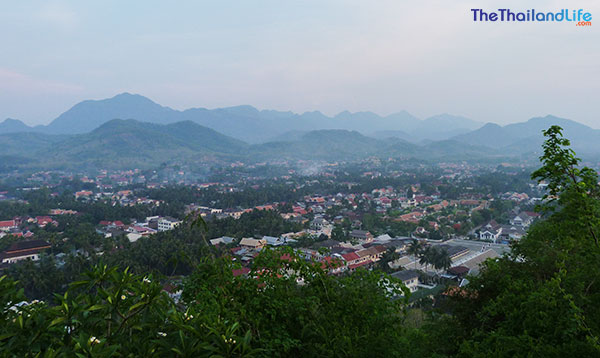
Tourism is the backbone of this somewhat sleepy town, so you may end up paying a bit more for activities and services. But you don't need a big budget, believe me – just chilling out by the Meekong and strolling around for a few days is wonderful in itself.
In 1995, the town was designated as a UNESCO World Heritage Site due to its storied French colonial history. This set about preserving and enhancing historic architecture, and raising the city’s international profile.
Many of the temples here date back to the 16th century and are important hallmarks of Laotian Buddhism.
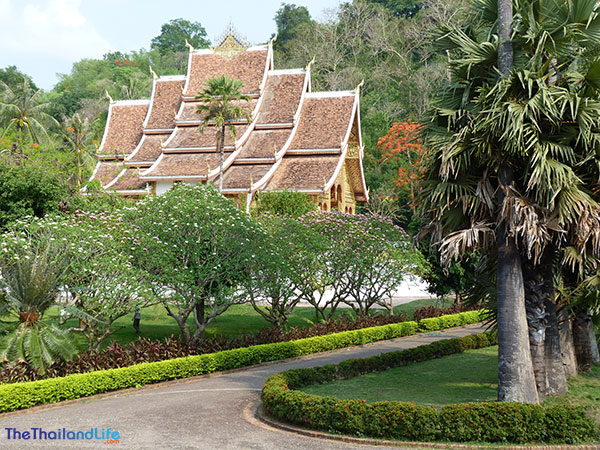
It is a popular backpacker destination, but don't expect boozy bars and clubs; this is more a place that travellers come to chill out after a spell of late nights, diving and trekking in Southern Thailand.
Things close up pretty early in Luang Prabang, with the only nightlife being a bowling alley that brings together foreigners and locals in a bowling-cum-disco setting.
There are a few spots to join young Laoation people dancing to Mor Lam and Thai pop songs, but as the main town shuts down around 10pm (after the night market), you will probably find yourself enjoying a Beer Laos outside your guesthouse and turning in early.
This way you can wake up early to witness the monks pass through the streets collecting offerings from locals and tourists.
My advice is visit during its dry season, from November to May.
Stay near the night market and you will be a stone's throw from the epic Mekong River that winds down through the valleys, carving up the jungle and playing host to wading fisherman casting chained nets into its waters.
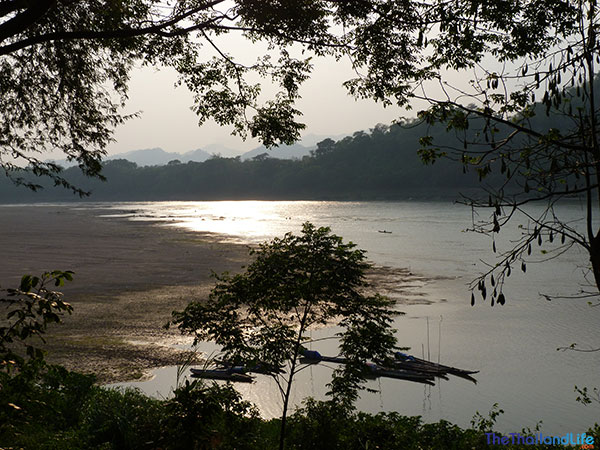
The food is very good in Luang Prabang, but if I had to recommend one place it would be the Saffron Coffee shop. You will find an abundance of baguettes and cakes everywhere, a timeless sign of French colonial rule.
If you speak a bit of Thai, you will be able to get by bartering in the market and speaking with shop staff. And if you speak Thai-Isaan you will have a considerable advantage as the two dialects are closely related and understood.
However, don't expect the overly open-armed welcome you're used to in Thailand. People are more reserved here and don't seem overly bothered by the tourist presence.
Anyway, here's my top 15 picks of things to do in this quaint town.
15 Things to Do in Luang Prabang
I apologize in advance for the some of the not so great video footage. It is from 2012 and on an old camera, but it still captures the essence.
1. Climb Mount Phousi
Mount Phousi is located in the center of the town, so it’s hard to miss.
It’s not exactly a short walk either- the hill sports 355 steps that visitors must climb to see the incredible views of the valley below, the surrounding mountains, and the Mekong.
Be sure to visit the tiny temple at the top of the hill, and try to coordinate your visit with either the rising or setting sun- it’s a view you won’t soon forget.
2. Visit the Royal Palace Museum
Also known as Haw Kham, Luang Prabang’s Royal Palace Museum is the place to learn of the history and culture of Laos. The exhibits date back several hundred years, documenting the colonial era up until the present day.
Though the Royal Palace was initially the living quarters of the sitting king, it has since been transformed to suit a variety of purposes, including the quarters for a communist regime some years ago.
3. Purchase at the Night Market
Luang Prabang’s extensive and beautiful night market is the perfect place for you to browse and purchase at your own leisure.
Yes, bartering is still part of the equation, but the experience is much less stressful than in other, larger Southeast Asian cities. Explore local made goods and purchase your souvenirs.
4. Visit the Kuang Si Waterfalls
Kuang Si might just be the most incredible sight in all of Luang Prabang. The series of waterfalls are hidden deep in the jungle-like hills of Laos.
What makes this series of falls unique is its turquoise, emerald color.
In some locations, visitors can even swim in the crisp, fresh water. Hikers can scale the sides of the falls, and keep an eye out for monks who regularly make the pilgrimage up and down to different prayer locations.
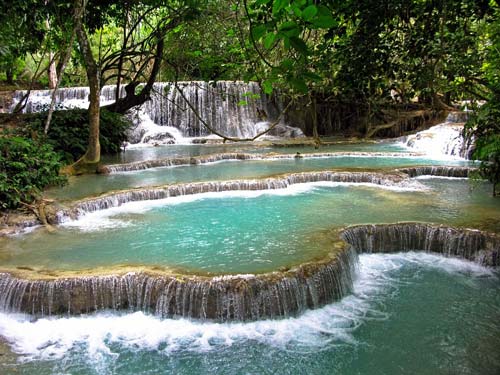
5. Visit the Pak Ou Caves
Take a trip along the Mekong to the Pak Ou Caves, which are approximately 25 km upstream. You’ll experience amazing views of the Mekong and sights of local agricultural families at work.
The Pak Ou Caves is one of the most holy sites in Laos. The caves (Tham Ting and Tham Theung) are home to over 4,000 Buddha relics, many of them carved out of wood.
The relics are hundreds of years old and the caves have acted as a place of worship for thousands of years.
6. Visit the Bear Rescue Center
Located on the same site as the Kuang Si waterfalls, the Bear Rescue Center is an excellent place to learn about the plight of the Asiatic Black Bear, a species which has. for years, been poached in Laos and Southeast Asia.
Walk through the rescue center, see the rescued bears, and learn about how organizations are working to stop the illegal wildlife trade that threatens many species.
7. Take a Trip on the Mekong
A pleasure ride on the Mekong is a great way to spend a sunny afternoon. Take a traditional boat, kick back, buy a beer and enjoy the ride.
You’ll see fisherman, farmers and other boats on the way. The Mekong also offers great opportunities for visitors to see the natural wonders of Laos from a river perspective.
8. Attend Tak Bat
Though this ritual will require an early wakeup call, Tak Bat is an ancient alms-giving ceremony that is not to be missed.
The Buddhist monks of Laos walk the main street each morning before their morning prayers and are given food, alms and flowers by the local people as a form of support.
The ritual is largely silent, but powerful as it stresses the symbiosis between the Laotian people and the monks.
9. Monk Chats
Who better to seek advice from than a monk? In many of the temples in Laos, monks will open the doors to inquisitive travelers and host informal, educational and conversational sessions where visitors can ask questions at will.
It’s a great way to connect with a local Laotian and an opportunity for the monks to practice speaking conversational English.
10. Walk the Bamboo Bridge
Crossing the Nam Khan River without a boat seems difficult, but during the dry season (from November to May) the residents of Luang Prabang construct an intricate Bamboo Bridge that spans the width of the river.
The bridge is rebuilt every single year because the rising water levels from monsoon rains wash it away. There is a small fee to cross, but it’s quite the experience as the bamboo is rickety and the bridge is built high over the water. Here is how I got on…
11. Make a Laotian Meal
Take a tuk tuk through the emerald mountains of Luang Prabang to Tamarind, which is a Laotian cooking school in the hills. Visitors are encouraged to purchase ingredients from local markets and are taught the intricacies of Laotian cuisine.
Over the course of a day, visitors will learn how to make traditional dishes like Nam Khao, Bamboo and Yanang Soup and Tum Mark Hoong.
12. Attend the Morning Market
Want to experience the real Luang Prabang? Get up early enough and you can. Make your way to the walking street and you’ll find that the morning market extends to small alleyways around the city.
There, you’ll find Laotian locals shopping for the day’s food and you’ll be able to pick and choose your choice of produce and other local goods. For culinary obsessed travelers, this is a must-see!
13. Visit Wat Xiang Thong
This is Luang Prabang’s most famous temple and is absolutely worth a visit. It is also the region’s best known monastery.
The interior is home to one of the most beautiful mosaics that portrays a giant ‘tree of life.’
The temple also houses several impressive Buddhas, including one rare reclining Buddha.
Visitors who arrive at the temple before mid-morning will be rewarded by few crowds and the opportunity to take pictures of the gorgeous interior.
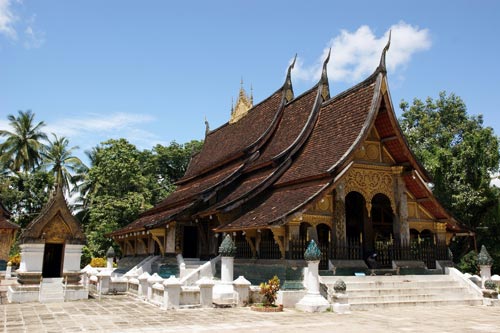
Photo credit: Allie_Caulfield @ Flikr
14. Do Some Yoga
Visitors tired out by their stay in Luang Prabang should consider partaking in a yoga class or retreat, some of which are held along the river to provide guests with the most stunning and relaxing views.
Luang Prabang is the most serene location for visitors looking to escape from the bustle of the rest of Southeast Asia, and a yoga retreat is the perfect way to round out a trip to this Laotian city.
15. Visit the Traditional Arts and Ethnology Center
Explore more of Laotian culture by visiting the Arts and Ethnology Center, which permanently showcases exhibits of Laos’ major ethnic minority groups.
Exhibits include religious artifacts, handicrafts, traditional tools, and clothing. There is no better way to explore and celebrate the richness and beauty of Laotian culture.
How to Get to Luang Prabang
Reaching Luang Prabang from Vientiane is not difficult. Flying is the best way, by Air Asia, Laos Airlines, or Bangkok Airways.
Another popular way to reach Luang Prabang is by slow-boat, which could take up to three days. The fast-boats are not considered a safe or viable option for travelers.
I assume you might be coming in from Thailand, as Laos is usually the country people visit after Thailand. This can be done via plane (the easiest, fastest route) or by bus or boat.
Buses from Bangkok and Chiang Mai can be taken to Chiang Khong, a popular crossing location.
From there, a minibus can take visitors over the border into Laos. Though the trip may be long, it will certainly be eventful!
From Vientiane. the bus takes 13 hours. So you could go Bangkok to Vientiane (see here), stay there, and then take the bus to Luang Prabang. Long but cheap!
=> All tickets can be booked right here
Where to Stay in Luang Prabang
Accommodation wise, anything between $25-40 will provide adequate accommodate. $60 upwards will secure more luxurious accommodation. Of course, there are hostels too for $8-$15 per night.
There are a couple of fancy hotels but most places are guesthouse style, beautifully presented in precious woods. I stayed in the Le Sen Boutique Hotel.
It was really cosy with a nice hot shower and breakfast included. You'll love it there.
How to Get Your Laos Visa
As you probably know, you will need a visa to enter Laos. It's pretty straightforward and generally no one is refused a visa, but it can be a bit of a hassle when immigration is really busy.
Sometimes you arrive at the border and there are hundreds of people going through the same time, which means you have to queue. You then need to get your application form, sit down, fill it out, and then approach the window and pay your fee.
The most cost-effective way to pay is in US Dollars, so you would need to make sure you acquire USD before you travel.
However, to simplify this process and make your life a lot easier, you should just take advantage of the eVisa system.
You can simply get your visa online before you travel, print it out, and hand it over when you arrive at immigration. The best thing about this is that you can go through the fast-track lane and not have to queue up to do the whole application thing.
I highly recommend this.
=> Click here to get your eVisa for Laos
Wishing you safe travels!
Last Updated on
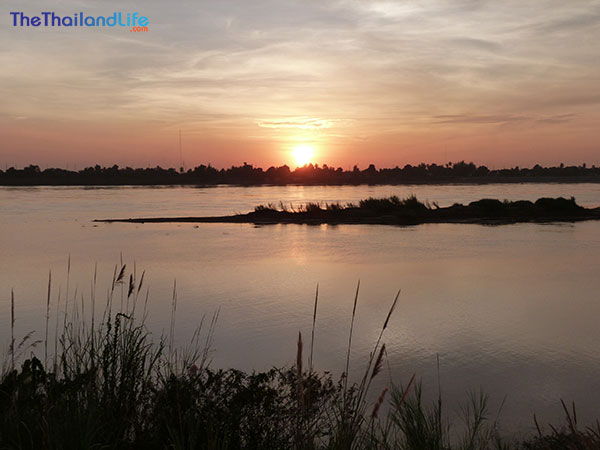
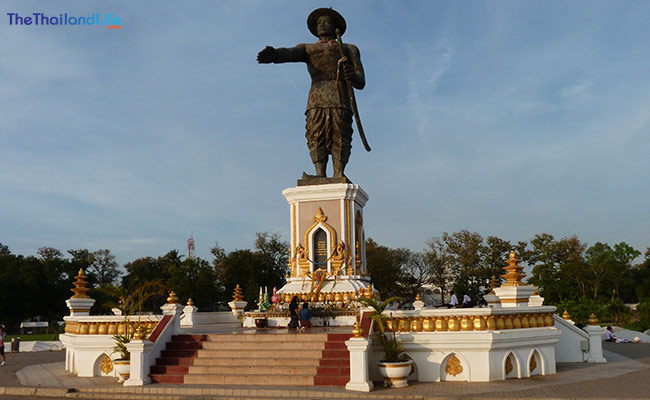
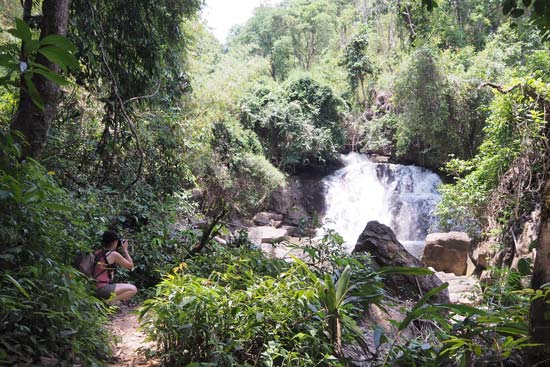
Hanh Pham says
Jul 15, 2016 at 11:46 am
Bangkok Blog says
Looks like a nice change from Singapore or KL.
May 08, 2012 at 9:21 pm
TheThailandLife says
May 11, 2012 at 12:24 am
nathan says
re: neale, for us we went to vangvieng first. we came from bkk to vientienne on train 1st class which cost $40AUD each - crossed the friendship bridge for $20Bath on a train - then paid $500bath ($15aud) minivan to get us from vientienne to vang vieng stayed 4days then paid $11AUD from vangvieng to luang prabang -
May 05, 2012 at 12:54 pm
TheThailandLife says
May 05, 2012 at 1:04 pm
neale says
May 05, 2012 at 11:00 am
TheThailandLife says
May 05, 2012 at 11:52 am
philip says
Aug 29, 2019 at 12:32 pm